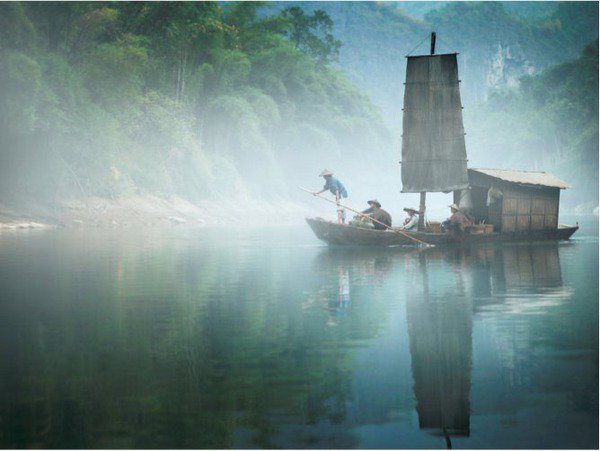Unfinished Journeys
dal 14/3/2012 al 19/5/2012
Segnalato da
Bas Jan Ader
Francis Alys
Chantal Akerman
Knut Asdam
Rosa Barba
Rui Calçada Bastos
Stanley Brouwn
Kristina Bræin
Tacita Dean
Marine Hugonnier
Isaac Julien
Runo Lagomarsino
Helen Mirra
Adrian Paci
Robert Smithson
Fiona Tan
Sabrina van der Ley
Andrea Kroksnes
14/3/2012
Unfinished Journeys
National Museum of Contemporary Art, Oslo
The unremitting quest for one's own identity and place in the world, travel for the sake of the search, the ever unfulfilled craving for an 'object of desire' or moments gone past, migration and the wish to belong but also the restless urge for discoveries and explorations also addressing the downsides of these, exploitation and colonization. With works by 14 internationally renowned artists.

Bas Jan Ader, Francis Alÿs, Chantal Akerman, Knut Åsdam, Rosa Barba, Rui Calçada
Bastos, Stanley Brouwn, Kristina Bræin, Tacita Dean, Marine Hugonnier, Isaac Julien, Runo
Lagomarsino, Helen Mirra, Adrian Paci, Robert Smithson, Fiona Tan
The exhibition is curated by Sabrina van der Ley and Andrea Kroksnes.
Unfinished Journeys is inspired by a number of the National Museum’s most recent acquisitions, the
impressive nine-channel video installation Ten Thousand Waves by British artist Isaac Julien which
poetically interweaves a range of stories that link China’s past and present, Knut Åsdam’s haunting
video-installation Abyss confronting us with contemporary displacement in a situation of drastic
urban change, Marine Hugonnier’s Travelling Amazonia exploring the never quite finished
thoroughfare cut from East to West through Amazonia as well as Runo Lagomarsino’s We all
laughed at Christopher Columbus alluding to an even earlier pioneer route.
Presenting fourteen
internationally renowned artists, the exhibition is dedicated to ‘unfinished journeys’ of various kinds:
The unremitting quest for one’s own identity and place in the world, travel for the sake of the search,
the ever unfulfilled craving for an ‘object of desire’ or moments gone past, migration and the wish to
belong but also the restless urge for discoveries and explorations also addressing the downsides of
these, exploitation and colonization.
One of the core pieces in the exhibition is the second part of Bas Jan Ader’s “In Search of the
Miraculous”. Planned as a three part project almost like a conceptual research into the topos of the
romantic journey typical of the ‘Bildungsroman’, Ader’s quest turned into that of the tragic hero, not
least due to his disappearance at sea. In this context, the exhibition takes an existentialist approach,
which deals with the final refuge of the romantic, the utopian, the idealistic and the miraculous. This
may seem anachronistic in our disillusioned or pragmatic post-postmodern times, and yet these
motifs are frequently pursued by artists and writers as if they were essential to the human condition.
Perhaps the Portuguese word ‘saudade’ is a more apt term to capture the many aspects of this
peculiar sense of longing or desire for something that cannot be had, the melancholic search for our
place in the world or our deep yearning for wholeness.
It has been argued that in the 21st century we are all chimeras, hybrids, “illegitimate bastards” who
can no longer draw upon an original comprehensive history. We are marked by different languages
and incompatible patterns of socialization. Thus the idea of a rooted identity, of an essentialist
concept of identity as essence and origin of the subject, has to be substituted with an image of the
subject as constituted by the routes it has traveled. So the question “Where are you from?” should
be replaced by “Where have you traveled?” or even “Where are you traveling?” Identity is a journey
that is unfinished. The title of the exhibition “Unfinished Journeys” can be seen as an extended
metaphor for the problem of identity formation. Many artists in the exhibition deal with the questions
of identity as explicitly geographical spatial expeditions. Their journeys to real and imagined places
show us life as a restless voyage of discovery, both literally and metaphorically. Unfinished
Journeys shows us that Heimweh (homesickness) and Fernweh (the longing for distant places) are
not in fact two diametrically opposed emotions but two sides of the same problem. Their main
common denominator is the notion of longing to find oneself. Robert Smithson’s return to his home
town Passaic is a voyage of discovery no less restless than the search for a place to belong in
Adrian Paci’s Klodi, Åsdam’s abysmal odyssey around the transforming neighbourhoods near the
construction sites for the Olympic Games in London, or Rosa Barba’s expedition to a “real-and-
imagined” moving island in the Baltic Sea – to name just a few. It is the quest to know ourselves in
the world that drives us out to foreign countries and back home again. They seem to agree on one
thing: it is no longer possible for us to return home and stay.
A bilingual catalogue has been published with texts by Morten Strøksnes, Andrea Krosknes, and
others.
Image: Isaac Julien, Yishan Island, Voyage (Ten Thousand Waves), 2011 (courtesy the artist & Victoria Miro Gallery)
Ten Thousand Waves, 2011, collection: Nasjonalmuseet, Oslo
Press contact:
Elise Lund, Media and Press Manager, Phone ++47 21 98 22 12, elise.lund@nasjonalmuseet.no or
Andrea Kroksnes, Phone ++47 93 48 97 93, andrea.kroksnes@nasjonalmuseet.no
Opening: 15 March at 6 p.m.
The National Museum of Norway Museum of Contemporary Art
Bankplassen 4, Oslo
Hours:
Tuesday, Wednesday and Friday 11.00–17.00
Thursday 11.00–19.00
Saturday and Sunday 12.00–17.00
Monday closed



